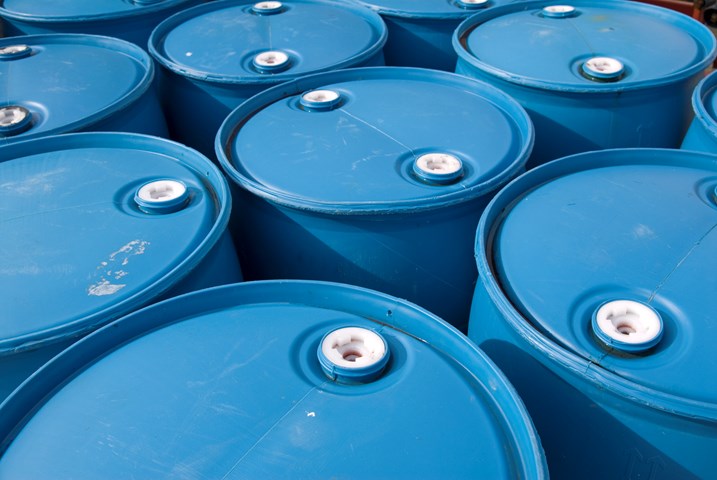Discuss your challenges with our solutions experts
Oil is 100 but there’s no party
1 minute read
Alan Gelder
SVP Refining, Chemicals & Oil Markets

Alan Gelder
SVP Refining, Chemicals & Oil Markets
Alan is responsible for formulating our research outlook and cross-sector perspectives on the global downstream sector.
Latest articles by Alan
-
Opinion
The impact of the Israel-Iran conflict escalation on the global energy market
-
Opinion
Oil and refining market implications of Israel’s strike on Iran
-
Opinion
What is the impact of US tariffs on oil and refining?
-
Opinion
Oil and refined products in 2025: a commodity trader’s guide
-
Opinion
Global refinery closure outlook to 2035
-
The Edge
What a future Ukraine peace deal means for energy (Part 2)
This article first appeared on Forbes.com on September 27, 2019.
Usually, achieving 100 is a notable event and worthy of a celebration, especially for those celebrating their 100th birthday.
But not all centenaries are a cause for celebration.
In 2019, annual average global oil demand will exceed 100 million barrels per day (b/d). This is not a cause for joy, given concerns we are entering a climate emergency. Public perception in the Western world is shifting towards a strong desire to reduce global emissions – and our demand for oil and other fossil fuels – so we can mitigate our impact on the climate.
Oil demand has grown considerably – in 2000, it was only 78 million b/d. Growth has averaged more than 1 million b/d each year. There have been years of strong growth, with only the global financial crisis of 2008/2009 resulting in a decline in overall global oil demand.
Oil demand growth surged in 2010 as many countries deployed economic and fiscal stimuli to avoid the dire consequences of a depression. Since then, oil demand has continued to grow at around 1 million b/d per year.
Oil demand growth is essentially all about road transportation, as this accounts for almost three-quarters of the growth. Global car numbers have roughly doubled since 2000, increasing by roughly 30 million vehicles per year. There are now more than 1.2 billion passenger cars in use around the world.
Business as usual does not deliver a climate as usual.
Oil demand growth surged in 2010 as many countries deployed economic and fiscal stimuli to avoid the dire consequences of a depression
Commercial vehicles have seen similar growth, as more goods are manufactured and moved to market. This increase in energy use has been spurred by growing prosperity of emerging economies, which has seen a rise in their middle class populations, higher urbanisation and the associated attributes of a higher standard of living.
Aviation is one of the fastest growing sector of oil demand, as travel for both business and leisure continues to increase. Demand growth is particularly strong in Asia, as higher disposable incomes are spent on leisure and ticking off “bucket list” destinations.
Demand for oil extends outside the transport sector, as the industrial, residential, commercial and agricultural sectors globally account for over 20 million b/d. There has been virtually no growth in demand from these sectors since 2000, but more worryingly, there has been no decline. The de-industrialisation of the Western economies may have reduced their demand from these sectors in those countries, but that oil demand has merely followed the industries and migrated to other regions.
Oil demand has a huge base of legacy equipment and industries that it serves, which in turn provide mobility, goods and services to the global economy. Rather like a super-tanker, changing the trajectory of oil demand and decoupling it from global economic activity is a major challenge and will likely be a slow process.
There will be sectors that oil demand continues to grow. Plastics is a key example. Plastics waste, particularly that in the ocean, is becoming socially unacceptable, so significant investment is needed to collect and recycle plastic waste.
The consumer plays a role here, but Europe has shown the consumer follows their money. The recycling rate of plastic bottles is almost an order of magnitude higher in countries that have a deposit collection scheme compared to those that do not. For consumers, money talks.
There are many other benefits of these schemes – not only for the brand owner, but also for the recycler as the quality of what they collect is known and high. Huge investment is required to improve recycling rates, but even with an improvement in recycling rates, petrochemical demand is expected to grow.
Life cycle assessments show clear benefits for petrochemicals over natural materials due to their lower weight, improved performance and lower energy inputs for their creation, which is critical for the holistic assessment of their environmental impact.
Electric vehicles have been available for some time, but they are primary for the wealthy despite attracting significant subsidies. Global new car sales are of the order of 90 million vehicles, with less than 5% being battery electric vehicles. With cars typically having a life of over 10 years, electric vehicle sales need to be transformed if they are to switch oil demand growth into decline.
The overall process of moving away from oil is slow because there are currently few commercially viable alternatives that can be readily deployed at scale. For electric vehicles, this is still some years away and dependent upon battery technology improvements, which are then deployed at scale.
Oil demand is not dead and will not simply go away because the Western public – who aren’t changing their behaviour patterns quickly – want it to be so.
Difficult choices need to be made to prompt a technology revolution that decarbonises the road sector, along with a rapid transition to a circular economy. As with any technology revolution, many promising options will fail.
The current pace of change is simply too slow to avoid the world getting warmer, and without rapid change, oil demand is likely to continue to grow.
“Business as usual” does not deliver a “climate as usual”.







